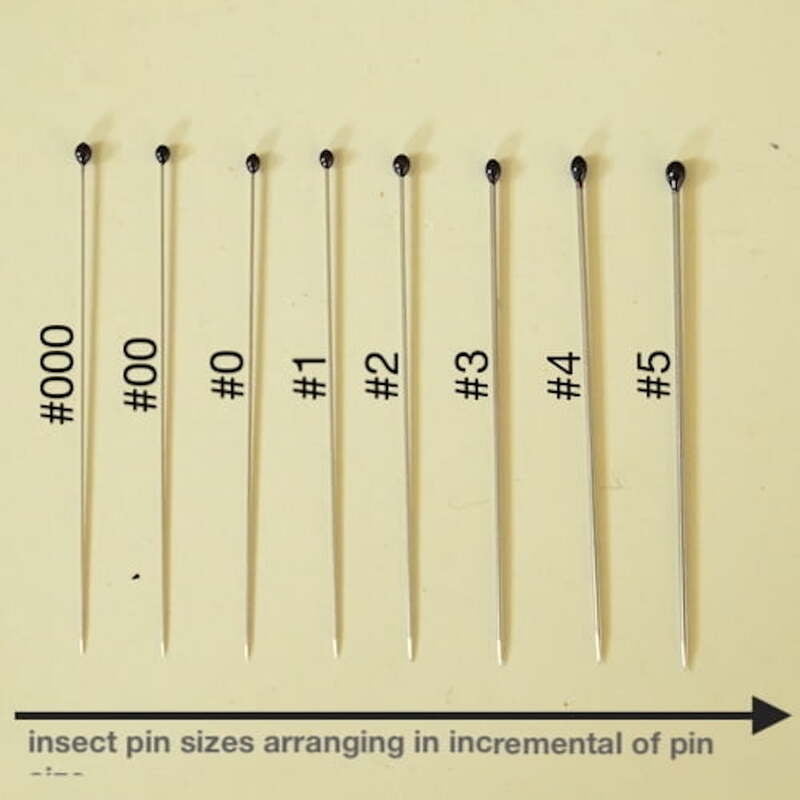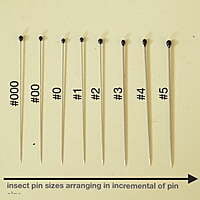



Insect pins Pack of 25 No
Rs.125.00
Tags:
Insect pins are indispensable tools in entomology, used for a multitude of purposes. These slender, pointed pins are utilized to secure delicate insect specimens onto mounting boards, allowing for precise study, classification, and display. They aid in preserving the structural integrity of specimens, facilitating accurate observation of morphological features and research into taxonomy, behavior, and evolution. Insect pins also serve as essential tools in educational settings, fostering an understanding and appreciation of the intricate world of insects.
Product Details
GeniusGullu Insect pins are slender tools commonly employed in entomology for mounting and preserving insect specimens. These pins, usually made of stainless steel, aid in securely fastening delicate insects onto mounting boards or within display cases. They prevent distortion or damage to specimens, ensuring their anatomical features remain intact. Insect pins are crucial for accurate identification, research, and educational purposes. They facilitate proper storage by enabling specimens to be positioned for optimal observation. These pins offer entomologists and collectors a means to organize, study, and appreciate the diverse world of insects while preserving their natural characteristics for scientific exploration and public display.
GeniusGullu Insect pins come in a range of sizes to accommodate the diverse array of insect species and their varying sizes and fragilities. The size of the pin is often denoted by a number, with each number correlating to a specific thickness and length. Here's a breakdown of the commonly used insect pin sizes and their specific applications:
1. **Size 000:** Extremely fine pins. - **Use:** Ideal for pinning tiny, delicate specimens like small midges or thrips.
2. **Size 00:** Very fine pins. - **Use:** Suitable for slightly larger yet still delicate insects such as small ants or tiny moths.
3. **Size 0:** Fine pins. - **Use:** Used for small specimens like aphids or other small beetles.
4. **Size 1:** Standard fine pins. - **Use:** Suitable for a variety of small insects, such as many flies or small butterflies.
5. **Size 2:** Standard medium-thickness pins. - **Use:** Good for medium-sized insects like common butterflies, larger flies, and many beetles.
6. **Size 3:** Slightly thicker than size 2. - **Use:** Used for larger and more robust specimens that need added support, such as big moths or some beetles.
7. **Size 4:** Thick pins. - **Use:** Ideal for sizable, heavier insects like some large beetles.
8. **Size 5 & 6:** Even thicker pins. - **Use:** These are meant for the heaviest and most robust insects, ensuring they are securely anchored without tilting or falling over.
9. **Size 7:** The thickest pins. - **Use:** Perfect for the largest specimens or when multiple specimens are pinned on a single pin for comparative purposes.
When selecting a pin size, the goal is to choose one that provides stability to the specimen without causing undue damage. The pin should enter the insect's body smoothly, without splitting it, and be thick enough to prevent the specimen from rotating or moving once pinned. However, it shouldn't be so thick that it damages the specimen or makes it look awkward when displayed. Proper technique, combined with the correct pin size, ensures the insect's integrity and appearance are preserved. We also have minuten pins (0.1, 0.15 and 0.2mm) for pinning very small insects with pierceable body.



